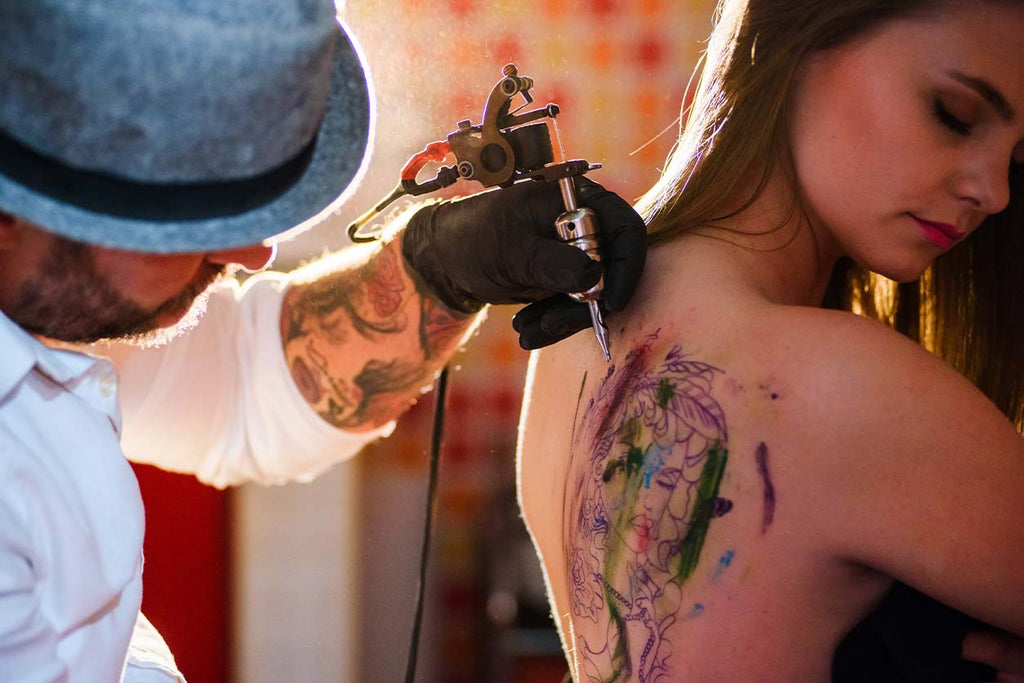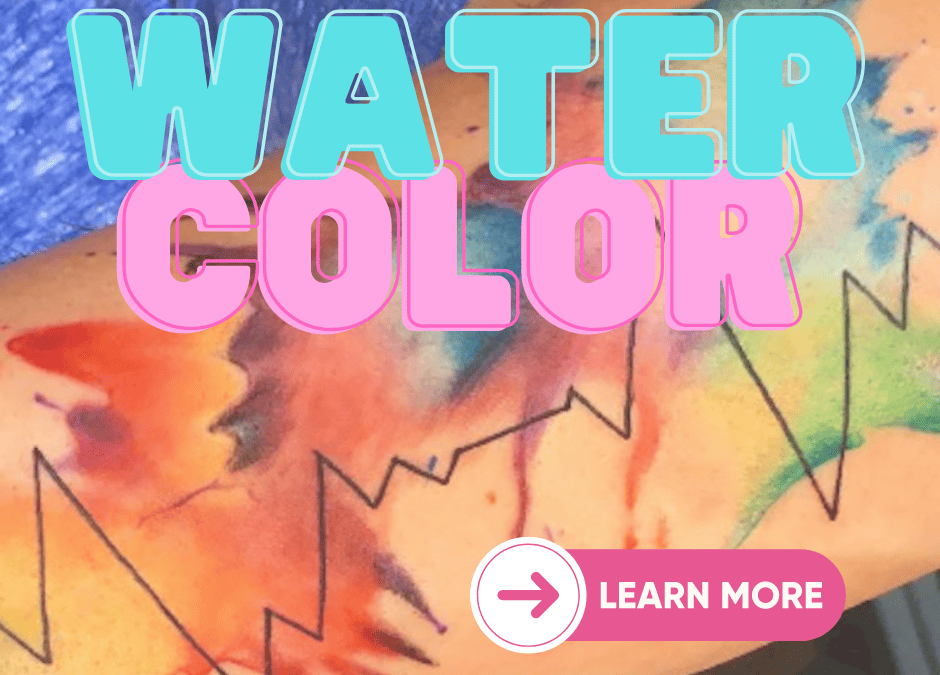The Origins and Evolution of Watercolor Tattoos
In the realm of tattooing, artistic expression knows no bounds. Tattoo artists explore blackwork and vibrant realism, constantly innovating to captivate audiences with their creativity and boundary-pushing designs. The watercolor tattoo is such an innovation that it has gained significant traction in significance.
Watercolor tattoos represent a departure from the traditional approach to tattooing. Watercolor tattoos mimic fluidity and spontaneity, blending colors seamlessly and embracing asymmetry, evoking a delicate, organic, and painterly aesthetic.
The origins of watercolor tattoos can be traced back to the experimental spirit of contemporary tattoo artists. Inspired by the free-flowing nature of watercolor art, these artists sought to translate its beauty onto the human canvas. They challenged conventional notions of a tattoo, opting for soft gradients and translucent layers over traditional techniques.

Initially, watercolor tattoos were met with skepticism within the tattoo community. Traditionalists doubted watercolor tattoos’ durability, fearing premature fading and distortion. Yet, as artists refined techniques, they gained recognition for unique aesthetics.
The Artistry Behind Watercolor Tattooing
Creating a watercolor tattoo requires a delicate balance of technical skill and artistic intuition. Unlike traditional tattooing, which often follows a precise stencil, watercolor tattoos are typically freehanded, allowing for greater spontaneity and improvisation. Artists must understand color theory and composition to achieve the desired effect, carefully layering pigments to create depth and dimension.
One of the hallmarks of watercolor tattooing is its emphasis on blending and shading techniques. Artists employ needle configurations and ink dilution techniques to replicate soft edges and subtle transitions akin to watercolor paintings. This meticulous approach yields tattoos with an ethereal quality, where colors seem to flow across the skin.
Watercolor tattooing remains a niche within the larger tattoo community despite its popularity. Watercolor tattooing demands specific skills not taught in traditional apprenticeships. Yet, it offers immense rewards for specialists, attracting clients seeking boundary-pushing designs.
Why Watercolor Tattoos Are Capturing Hearts

The appeal of watercolor tattoos lies in their ability to evoke emotion and convey personal narratives through imagery. Each tattoo becomes a wearable work of art, reflecting the individuality and creativity of its bearer. Watercolor tattoos provide boundless avenues for self-expression, ranging from serene landscapes to abstract forms, appealing to those who seek meaningful symbolism and visual allure.
For more profound, watercolor tattoos often carry a deeper significance for the wearer. Watercolor tattoos allow for more abstract and open-ended interpretations than traditional tattoos, which may rely on explicit symbolism or iconography. This ambiguity encourages viewers to imprint their emotions onto the artwork, fostering a bond between the wearer and observer.
Moreover, watercolor tattoos also offer practical advantages in addition to their aesthetic appeal. Unlike traditional tattoos, which may fade and blur over time, watercolor tattoos age gracefully, acquiring a soft, watercolor-like patina that enhances their organic appeal. This natural evolution contributes to their timeless allure, evoking nostalgia for both the wearer and the viewer.
Tips for Choosing and Caring for Watercolor Tattoos
If you’re considering a watercolor tattoo, there are a few things to remember to ensure the best possible outcome. First and foremost, research is vital. Look for reputable artists who specialize in watercolor tattoos and have a portfolio showcasing their proficiency in the style. Before committing, review artists’ portfolios and client feedback to accurately assess their expertise and professionalism.
Embracing Watercolor Tattoos: A Splash of Art on Skin
Watercolor tattoos blend vibrant hues and fluid brushstrokes, creating mesmerizing designs that defy traditional tattoo styles. Discover the evolution of this trend, its unique appeal, and the artists who bring these masterpieces to life.
Once you’ve selected an artist, schedule a consultation to discuss your ideas and preferences. Bring reference images or sketches to help convey your vision, and be open to their input and suggestions. Collaboration is key in designing a watercolor tattoo, ensuring the artist can tailor the design to your anatomy and skin tone.
During tattooing, be prepared for a more extended session than traditional tattoos. Watercolor tattoos require careful layering and blending, which can take more time to execute correctly. Trust your artist’s expertise and remain patient throughout the process, knowing the result will be worth the wait.
Aftercare is also crucial to ensure the longevity and vibrancy of your watercolor tattoo. Follow your artist’s instructions carefully, including gentle cleansing with fragrance-free soap, moisturizing with a tattoo-specific lotion, and protecting the tattoo from prolonged sun exposure. With proper care, your watercolor tattoo will continue to delight and inspire for years.




